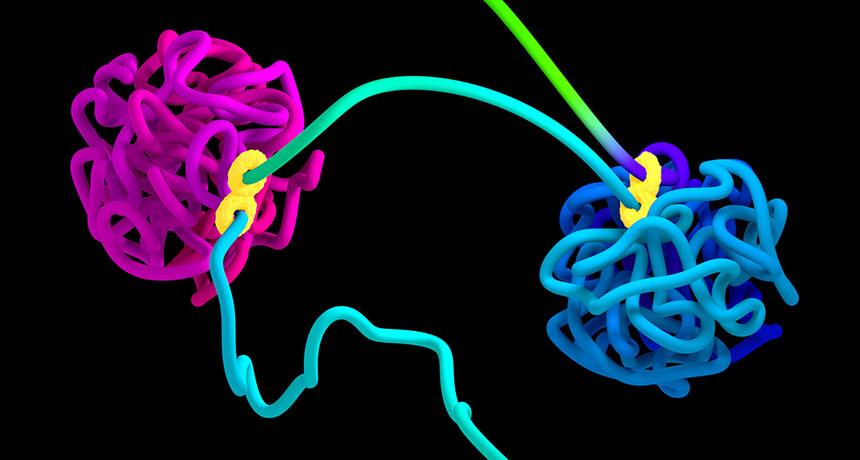Genetic tweaks manipulate DNA’s loops
Engineering genome shape in nucleus could influence gene activity

BENT INTO SHAPE A strand of DNA folds into globules (pink and blue) as it threads through two bundles of proteins called extrusion complexes (yellow), this new simulation shows.
Najeeb Marc Tarazi, Adrian Sanborn, E.L. Aiden